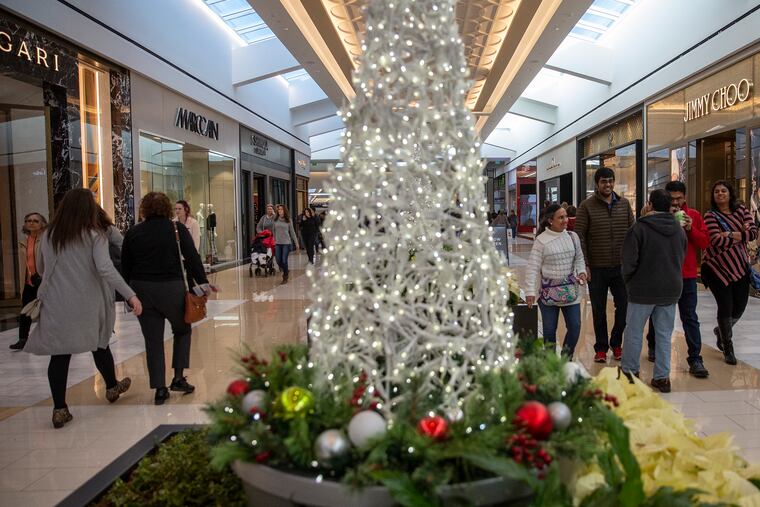Holiday shoppers shelled out more on gifts, restaurants, and decor this year
Consumers were “willing and able to spend but driven by a search for value,” including on Black Friday and Cyber Monday, said one economist.

Holiday shoppers shelled out more on gifts, restaurant meals, and decor than they did last year, according to reports from major credit card companies.
The year-over-year uptick was detailed by Visa and Mastercard, which found overall retail sales increases of 4.8% and 3.8%, respectively.
Shoppers were “willing and able to spend but driven by a search for value,” including on Black Friday and Cyber Monday, Michelle Meyer, Mastercard Economics Institute’s chief economist said in a statement.
About 10% of all holiday spending occurred between Friday, Dec. 20, and Tuesday, Dec. 24, according to the Mastercard SpendingPulse report released Thursday.
While overall retail sales rose 3.8%, according to Mastercard, restaurant spending saw an even steeper hike, with spending up more than 6% compared to the 2023 holiday season. People also spent 3.6% more on clothing, 4% more on jewelry, and 3.7% more on electronics.
Online shopping grew in popularity, increasing by about 7%, according to Mastercard and Visa, though Visa’s survey found that more than three quarters of purchases were still made at physical stores this holiday season.
The numbers showed “increasing consumer confidence as people sought out in-store experiences — and went online — to purchase gifts and celebrate the holidays with friends and family,” Wayne Best, Visa’s chief economist, said in a statement. “This spending growth demonstrates the adaptability of both consumers and retailers and the overall strength of the economy.”
The overall increase in retail sales exceeded industry expectations, with Mastercard this fall having predicted a 3.2% increase in holiday spending.
Consumer spending, which makes up about 70% of the country’s economic activity, is often looked at as a barometer of how confident households are feeling about their finances.
Both reports accounted for all forms of payments, including cash and check. Neither was adjusted for inflation, but each found spending increases that outpaced the inflation rate over the same period.
The most recent federal report on consumer spending showed retail sales increased in November, though much of that jump was attributed to increased auto sales after two major hurricanes struck the southeast. Sales were down at restaurants, clothing retailers, and grocery stores, as consumers battled presidential-election anxiety and economic uncertainty. Some business owners, meanwhile, were worried about a shorter-than-normal period between Thanksgiving and Christmas.
The National Retail Federation is set to release its November-December report in January. In the fall, the trade group had predicted an increase of between 2.5% and 3.5% compared to the 2023 season, for a total of between $979.5 billion and $989 billion in holiday spending this year. That would mark a slower increase than the 3.9% recorded between the 2022 and 2023 holiday seasons.
This article contains information from the Associated Press.